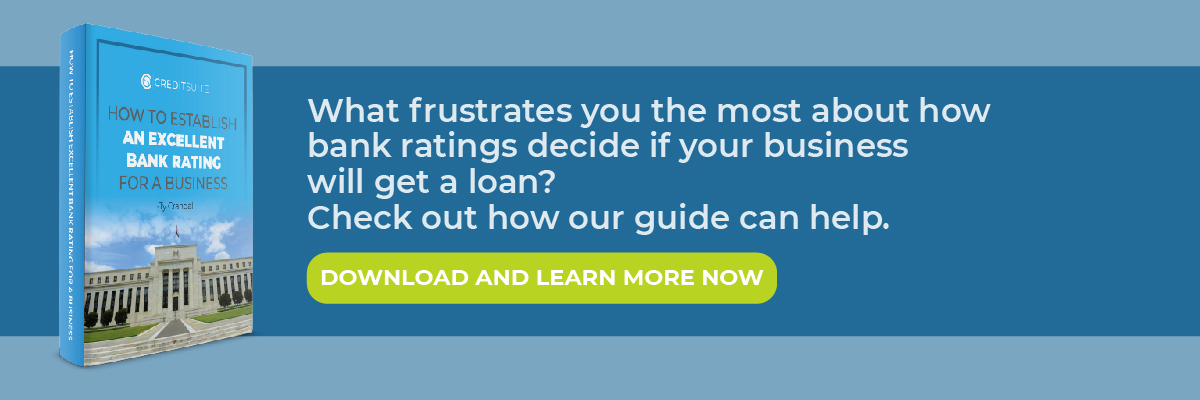It’s Time to Have Your Bank Credit Understood
Bank credit is the total amount of borrowing capacity a business can obtain from the banking system. Banks have their own internal way of scoring and rating businesses credit worthiness. They do this through a system called bank ratings, which rates the credit worthiness of a business from the bank’s perspective.
What’s a Low-5 Bank Rating?
A business can secure more business credit quickly as long as it has a minimum of one bank reference and an average daily account balance of at least $10,000 for the past three months. What lenders REALLY want to see is that a business has this $10,000 average balance. When a business has this, it yields a “Bank Rating” of Low-5, meaning the business has an average-daily-balance of $5,000 to $30,000.
The High-4: Your Bank Credit Understood
A business that has a balance of $7,000 to $9,999 will net the business a lower rating such as a High-4. So, this will make it harder for a business to get approval for bank financing. Here is the actual bank rating scale. So you can see where your business might rank:
- High 5, account balance of $70,000-99,999.
- Mid 5, account balance of $40,000-69,999.
- Low 5, account balance of $10,000-39,000.
- High 4, account balance of $7,000-9,999.
- Mid 4, account balance of $4,000-6,999.
- Low 4, account balance of $1,000-3,999.
Average Balances, Over Time Are Also a Part of Having Your Bank Credit Understood
There are other factors outside of average bank account balances that affect this rating. A business will be scored higher if it has the average balance of $10,000 for 3 months, so it’s crucial that the money be in the account, and stay in the account for 3 months to maximize the bank rating.
How Does Overdrawing and Writing NSF Checks Affect Everything?
Overdrawing the account and obtaining non-sufficient-funds charges is one big way any business can severely hurt it’s bank rating. For the best rating, a business should insure their bank statements reflect a positive cash flow. Positive free cash flow is the amount of revenue left over after the company has paid all its expenses.
When the account shows a positive cash flow it indicates that the business is generating more revenue than they use to run the company. This increases the bank rating. The bank rating is also improved when the business has a consistent amount of regular deposits.
What Do Other Bank Products Have to do With Anything?
Other factors can also affect the rating including age of the bank account, other bank products that the business uses, and how many investment and savings accounts the business has. Having a good bank rating is essential with securing bank financing.
Improve Your Bank Credit Rating
To maximize your bank rating insure you keep your bank balance average over 3 months as high as you can, preferably over $10,000 and that your account doesn’t go negative.
Take advantage of and use other services your bank offers such as CDs, savings accounts, and other investment accounts. And open your bank account when your corporation starts, and leave it open as this longevity will help your bank rating.
Consistent Deposits Are Key
Make consistent deposits on a regular basis into your business bank account. And make sure each month you have good cash flow through your account by regularly putting into the account more money than you take out. Taking these steps will make sure you have an exceptional bank rating. And then you can get approval for the greatest amount of bank financing.
Your Bank Credit Understood, on Balance
You can help your business clients obtain money and credit for their business by offering them the Business Finance Suite. And you can do so while radically increasing your company revenue in the process. Let us know how we can help.


